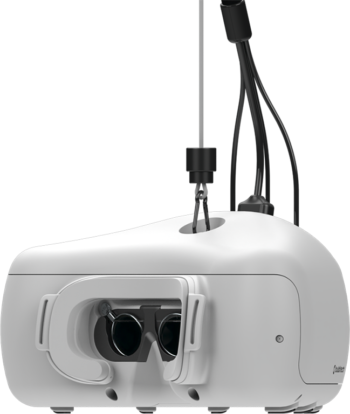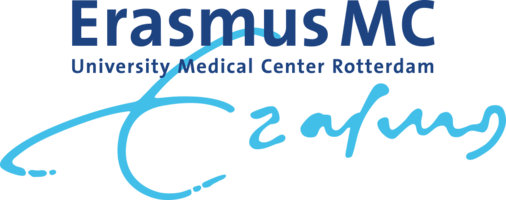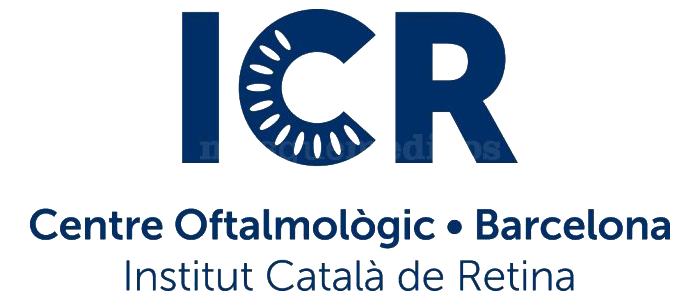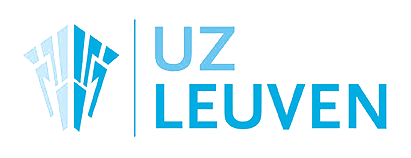BulbiCAM
Dedicated medical eye tracker for clinical researchers in ophthalmology, pharmacology & neurology
BulbiCAM
Dedicated medical eye tracker for clinical researchers in ophthalmology, pharmacology & neurology
Ongoing Research
Currently our technology is used in research at the following clinical partners:
- Oslo University Hospital, location Ullevål, Ophthalmology Department & Eye Research Centre, Prof. Dr. Goran Petrovski
- Oslo University Hospital, location Rikshospitalet, Clinical Neuroscience, Department of Neurology, Prof. Consultant Neurologist, MD, Phd Emilia Kerty
- Helgeland Sykehuset, location Mosjøen, Department of Ophthalmology, Yordanka Timova, Ophthalmologist, MD
- University College of Southeast Norway, Department of Optometry and Vision Science, Associate Prof. Gro Horgen Vikesdal
- Erasmus Medical Centre, Rotterdam, Neuroscience Department, Associate Professor, Phd, Dr. Johan Pel
- University Medical Centre Groningen, Laboratory for Experimental Ophthalmology, Visual Neuroscience, Prof. Dr. Frans W. Cornelissen
- Alrijne Hospital, Leiden, Ophthalmology Department, Barbara Haeseker, Ophthalmologist, MD.
- Sankara Nethralaya Eye Hospital, Chennai, Ophthalmology Department, Dr. Ronnie Jacob George MBBS, MS, DO, DNB
- Solim Med Eye Clinic, Dushanbe, Ophthalmology Department, Aziza Rajabova, Ophthalmologist MD, Phd
- Institut Catala de Retina, Barcelona, Spain, Department of Ophthalmology, Prof. Alfonso Antón López
- Klinicko Bolnicki Centar (KBC), Department of Ophthalmology, Split, Croatia, Prof. Ljubo Znaor.
- University Hospital Leuven, Belgium, Department of Ophthalmology, Prof. Catherine Cassiman.
- Universita Vita-Salute, Milan, Italy, Department of Ophthalmology, Prof. Giuseppe Querques.
Rigshospitalet Copenhagen, Denmark, Department of Paediatric Ophthalmology, Sarah Linea von Holstein, MD, Phd.
Cardiff University, UK, School of Visual Sciences and Optometry, Prof. Jonathan Erichsen & Dr. Lee McIlreavy
Why Use a BulbiCAM in Your Research
Bulbitech has overcome several problems that you often find with eye tracking technologies. Not only subjects using contact lenses, artificial lenses (IOL), glasses, mascara, and even pupil colour can impact the camera’s ability to record eye movements, but also elderly patients with acquired brain injury, dementia, Parkinson’s and other diseases have a hard time becoming a research subject where the job can easily be done. Furthermore calibration can be a hassle and could take a long time, and combinations of eye-and pupil movements often cannot be done. Consequently, not everyone can participate in a study and the representativeness of the sample can be highly impacted. At Bulbitech we decided to develop an easy-to-use, clinically robust eye tracker that avoided the mentioned issues. We believe we have succeeded, but we would like you to be the judge of that!
The BulbiCAM is a head-mounted display (HMD) consisting of two small screens, one dedicated to each eye, LED illuminators and an infrared eye tracking camera. The BulbiCAM is calibration free, records both eye- and pupil movements, can track trough glasses and lenses, has no issues on mascara wearers and our algorithm is getting more and more robust on subjects with IOL’s. With two displays one can project stimuli both monocular and/or binocular. Bedside testing is also easy. The representativeness of the sample is increasing, and the time consumed for the test subject and researcher is decreasing.
Advantages
- Calibration free
- Easy to use
- Suited for testing on elderly patients
- No need to remove make-up
- No need to remove contact lenses
- The BulbiCAM is self-supporting. No added weight on the test subject’s head or neck
- Less physical stress for the test subject. No chin and head rest needed
- The BulbiCAM can be suspended from a mobile cart for bedside testing in hospitals
- Projects stimuli both monocular and/or binocular
- Individual compensation of refractive errors and head shape
- Ongoing development for better measurements on patients with IOL’s (artificial intra ocular lenses)

| BulbiCAM technical specifications: | |
|---|---|
| Eye Tracking | 400-600 fps |
| Patient Refractive Range | -10 to +4 Diopters |
| Interpupillary Distance | 49mm - 75mm |
| Typical Pediatric Head Shapes | Supported |
| Stimuli Synchronization | Typical: ± 18ms Worst Case: ± 38ms |
| Two screens for independent presentation to each eye | |
| Accurate timing synchronization | |
| Head-mounted display with LED illuminators and eye-tracking camera | |
| Configuration available in both hanging and table-mounted solution | |
BulbiCAM Parameters
| Ophthalmic tests | |
|---|---|
| Visual Field | Seen/unseen in a visual field pattern optimized for glaucoma detection. Saccadic Reaction Time (SRT) Eye trace |
| Visual Acuity | LogMAR |
| Acuity 4 Kids | LogMAR |
| Contrast Sensitivity | Pelli Robson equivalent |
| Dark Adaptation | (Log Unit) Dark adaptation threshold (2 proprietary parameters). |
| Pupil | Pupil diameters with all consecutive permutations of dark and/or light on OD and/or OS. Latency Peak velocity Pupil graph |
| Ptosis | Margin to reflex distance (MRD1,2) |
| Worth 4 Dot | Verbal feedback from the patient |
| Amsler | Verbal feedback from the patient |
| Vergence 4 Kids | Near point of convergence (NPC) Break and recovery points |
| Neurological tests | |
|---|---|
| Nystagmus | Frequency (in five different gaze directions.) Amplitude (in five different gaze directions.) Nystagmus graph (in five different gaze directions.) Video reording of eye movements (real speed and slow motion) |
| Neurofield | Seen/unseen in a visual field pattern optimized for detection of pathology in the visual pathways. (Includes saccadic reaction times) |
| Saccadic Main Sequence * | Graph of saccadic velocity as a function of distance between stiumuli |
| Pupil | Pupil diameters with all consecutive permutations of dark and/or light on OD and/or OS. Latency Peak velocity Pupil graph |
* Under development |
Who We Are
Bulbitech was founded in 2015 with the intention to early detect both ophthalmological as well as neurological disorders. After testing existing eye-tracking solutions Bulbitech concluded none of them were sufficient to realize our ambition of having an easy to use eye tracker. That led to the manufacturing of our own eye tracking device, the BulbiCAM. In 2017 our company and software became CE-certified. In 2018, after launching a haploscope unit, Bulbitech decided to complete a head-mounted display unit. After passing several TRL stages Bulbitech’s eye-tracking solution finally became CE-certified in December 2020. During our development stage, we won the Oslo Innovation Week with our ambition to become a neuro-ophthalmic screening device. Currently, our technology is being used at Oslo University Hospital, Helgeland Sykehuset, University Medical Centre Groningen & Erasmus Medical Centre.
Partners that use our technology












